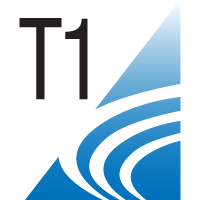Practice Management (PM)
LM310 - Pathways to Profit: Optimized Revenue Streams

Debra Joan Abel, AuD
Manager, Coding and Contracting
Audigy
Flat Rock, North CarolinaDisclosure(s): Audigy: Employment (Ongoing)

KC Grzelka
Strategic Business Unit Director
Audigy Group, LLC
Portland, OregonDisclosure(s): No financial or nonfinancial relationships to disclose.
Lead Presenter(s)
Presenter(s)
Are you ready to meet the challenges of a changing market? From third-party payers to direct-to-consumer and over-the-counter hearing devices, the stakes for independent practices are higher than ever. Increased pressure to integrate new hearing products and third-party contracts makes it critical to understand your revenue streams. Learn how to evaluate your practice’s streams through a data-driven approach to determine what products and contracts fit your brand, your patients’ needs, and your bottom line.
Summary:
From third-party payers to direct-to-consumer and over-the-counter hearing devices, the stakes for private practitioners are greater than ever. Increased pressure to integrate new hearing products and third-party contracts makes it critical to understand revenue streams. This course breaks down those streams, explains how to evaluate and make strategic decisions, and provides guidance on aligning revenue sources to maximize the business’s value position.
Revenue streams comprise all the sources contributing to a practice’s overall income. Whether selling a product, providing a service, or generating a subscription fee, businesses generally derive revenue from one of these foundational sources. The streams impact the practice in various ways, from defining the nature of the business to denoting what the business does and for whom. Understanding those key impacts allows insight into how the practice can influence its revenue streams.
Participants will gain a closer look at various methods of influence. A business focused on physician outreach, family and friend referrals, and local community groups such as senior centers, for example, is likely driving private pay. Conversely, contracting with insurance networks, government agencies, or hearing-benefit programs increases revenue from other respective streams. Understanding these and diversifying — which reduces risk, increases stability, and improves long-term market value — are key.
Wrapping it all together, this course guides participants on the crucial role of data in evaluating the various revenue streams to map an efficient and profitable model for the business. It also teaches the crucial step of ensuring brand alignment with the desired revenue streams. A practice interested in serving private-pay patients who are more focused on quality care and less on cost, for example, must ensure its brand and patient experience are in sync.
Learning Objectives:
- Upon completion, attendees will be able to describe revenue streams and how they impact a practice.
- Upon completion, attendees will be able to define the importance of revenue-stream diversification.
- Upon completion, attendees will be able to demonstrate decision-making that creates value for the practice and patients.

